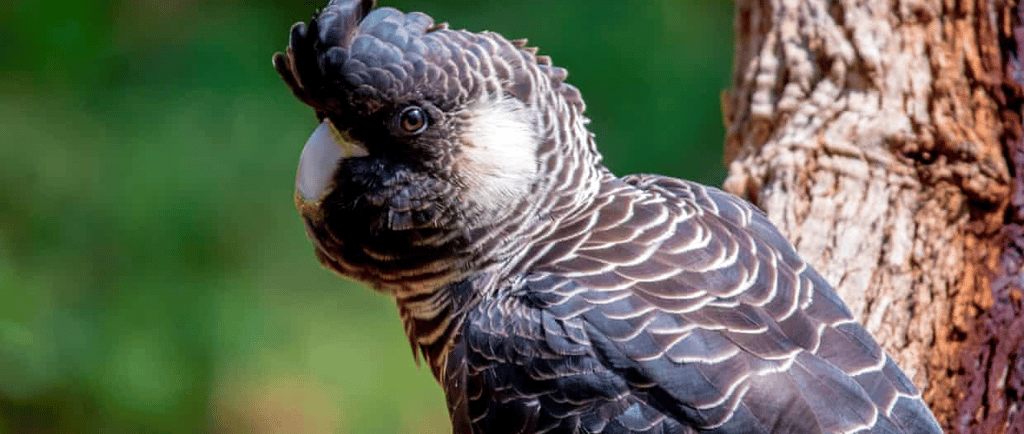Baudin’s or Bauxite How Western Australia’s Black Cockatoo Faces Its Moment of Truth
A critical look at how expanding bauxite mining in WA is driving the endangered Baudin’s black cockatoo toward extinction. This article explores where science, policy, and culture collide—and what choices remain.
NUTRITION


At first light on the jarrah forest edge the call of the Baudin’s black cockatoo echoes through trees that may not long survive. That call carries urgency. It carries warning. We are nearing a point where the choice will no longer be between development and conservation but between loss and survival. The question is stark: in the battle of Baudin’s or bauxite which side will we choose.
Conservationists warn that proposed expansions by Albany alumina producers Alcoa and South32 threaten more than 14,800 hectares of habitat in Western Australia’s northern jarrah forests. The Guardian These forests are not just trees. They are lifelines—nests, hollows, food, migration routes—for Baudin’s black cockatoo. Over past decades the species has lost ninety per cent of its population. The Guardian+2WA Forest Alliance+2 The scale of decline, paired with accelerating habitat loss from mining, reveals a trajectory scientists and communities describe as irreversible unless immediate change occurs. WA Forest Alliance+2ccwa.org.au+2
To understand what is truly being risked we must parse both ecology and evidence. Baudin’s black cockatoos depend on old-growth marri and jarrah trees in the northern jarrah forest. Hollows in older trees are essential for nesting. These hollows take well over a century to form and cannot be quickly replaced. WA Forest Alliance+2Echo Newspaper+2 When mining clears these trees, even with rehabilitation promises, the ecosystem loses its capacity to support breeding and foraging. Restoration is failing. Studies in Restoration Ecology find that areas cleared for bauxite mining have not met rehabilitation standards decades after disturbance. ccwa.org.au+2WA Forest Alliance+2 Food sources decline, connectivity between habitat patches is broken, and fire risk increases—all of which further stress the birds. Add in climate change with hotter, drier seasons and we see cumulative risk layering into crisis. WA Forest Alliance+2ccwa.org.au+2
The policy picture adds urgency. South32 has gained federal environmental approval to clear some 3,885 hectares of forest. ccwa.org.au+1 Alcoa proposes 11,000 hectares of further clearing in proposals just released for public consultation. WA Forest Alliance+1 Conservation groups argue that these approvals contradict promises made by government to halt species decline, to adopt nature-positive frameworks, and to prevent extinctions. WA Forest Alliance+2WA Forest Alliance+2 Meanwhile authorities have declined to list the Baudin’s cockatoo under critically endangered status, citing insufficient data despite strong evidence to the contrary. The Guardian+1
In everyday terms this means that patches of jarrah forest that once rang with cockatoo calls may grow silent. It means that children may grow up hearing stories of Baudin’s black cockatoo instead of seeing them in flight. It means that local communities lose not just biodiversity but a living cultural connection to place. And it means that regulatory frameworks risk failing to match the urgency of ecological collapse.
The path forward requires more than incremental shifts. It requires courage, clarity, and commitment aligned with scientific realities. First, no further clearing in highest-quality habitat should proceed. Old trees, hollows, mature marri stands must be protected, not simply offset or buffered. Second, critical legal recognition must catch up with science. Listing Baudin’s as critically endangered could unlock stronger protections and force stricter scrutiny of mining proposals. Third, rehabilitation must be realistic, transparent, scientifically informed, and adequately resourced. If forests cannot be restored in time to support species reliant on centuries-old trees, then those restoration targets must reflect that limitation. Fourth, public voices—indigenous custodians, local communities, conservation scientists—must be central in decisions. Their lived experience and ecological understanding offer insights that data alone cannot.
It is not a question of stopping all mining. It is a question of choosing what we value more: the fleeting gains of expanded bauxite extraction or the lasting legacy of Baudin’s black cockatoo flying freely. Western Australia stands at this crossroad. The decisions made now will echo for generations. TMFS believes that a future in which Baudin’s black cockatoo thrives alongside responsible development is possible. But if we accept policies that degrade habitat as inevitable, then we accept the slow erasure of a unique species and part of our heritage.
We call on government, industry and citizens to treat this moment with gravity. Assess the full cost of habitat loss. Demand transparency and accountability. Support conservation outcomes that match emergency. Insist that regulatory bodies live up to their duty. Only then can we safeguard Baudin’s place in Australia’s forests instead of consigning it to memory.
All rights belong to their respective owners. This article contains references and insights based on publicly available information and sources. We do not claim ownership over any third-party content mentioned.
